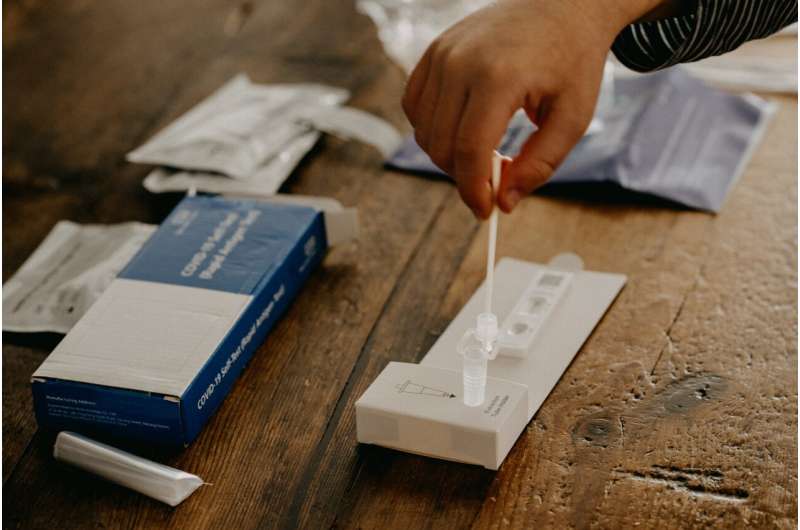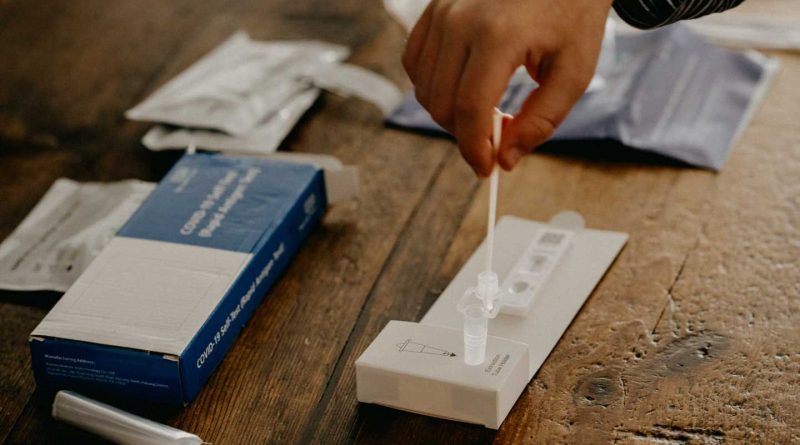Q and A: At-home tests for COVID-19

DEAR MAYO CLINIC: With COVID-19 continuing to be a concern, should I stock up on at-home COVID-19 tests so I don’t have to wait in long lines to get tested elsewhere? What kind of tests are sold over the counter, and what should I know before purchasing them?
ANSWER: The emergence of the new omicron COVID-19 variant has increased the number of COVID-19 infections around the U.S. and heightened the public’s awareness of testing options. As a result, more people are now being tested for COVID-19 as access to over-the-counter tests has increased. But the number of testing options, as well as the different types of tests that are available, can cause confusion.
In the beginning of the pandemic, testing was primarily performed using a polymerase chain reaction test, also known as a PCR test. This test was only available through certain public health labs. Throughout the middle and latter parts of 2020, many clinical labs across the country brought in molecular testing for COVID-19, including PCR testing.
Now, at-home testing is becoming more common, as more options become available to the public. While many of the self-testing kits should be able to detect the new omicron variant, it is important to remember that these tests can give a false negative result for a person infected with COVID-19.
Two types of tests are authorized by the Food and Drug Administration to diagnose COVID-19 infection: molecular tests and antigen tests. Both tests can be performed using a nasal swab specimen.
A PCR test looks for the virus’ RNA in a patient’s sample. A sample is collected by inserting a swab into a person’s nostril and taking cells from the back of the nose using a nasopharyngeal swab. While most PCR tests use a nasal swab, some allow for patients to spit into a tube to get a saliva sample.
PCR tests are highly accurate, and these tests can pick up low levels of the virus in a patient’s nasal swab sample. However, PCR tests are most commonly performed in a lab, so it may take a day or two to report the results.
In contrast, antigen tests—the tests used at home—detect a viral protein in the patient’s specimen. Using a nasal swab, antigen tests can produce results in 15-20 minutes. These tests are faster and less expensive than molecular tests, but the chance of a false-negative result increases. Antigen tests have been shown to perform better in patients with COVID-19 symptoms.
Understanding the differences between PCR and antigen tests is important as the new omicron variant increases in prevalence. Although most antigen tests should be able to pick up the omicron variant, some at-home tests may miss the virus, especially early after infection. This is because antigen tests only look for one viral protein, and some of the mutations present in the omicron variant could affect the performance of some antigen tests.
In contrast, PCR tests typically look for multiple parts of the viral genome. Because of this, these tests are less likely to be affected by mutations. In addition, PCR tests are more sensitive, so they’re able to provide a broader window of infection because they can detect lower amounts of the virus. This means they are better able to detect an infection earlier.
While at-home tests are an important tool in the fight against COVID-19, it’s important to understand their limitations, and know how and when to use them.
Due to the lower sensitivity of antigen tests, they should be used in closer proximity to a gathering. For example, using an antigen test the day of a family or work gathering would reduce the chance of a person with high amounts of the virus attending the event.
At-home tests shouldn’t be used as the sole way to mitigate risk. In other words, a negative antigen test shouldn’t be interpreted as a free pass to do whatever you want. If you are planning to gather with a group, use testing in combination with masking and distancing, if possible.
Symptoms and exposures should guide your testing strategy. If you are experiencing symptoms of COVID-19, such as a runny nose, cough, fever or fatigue, it’s important to be tested with a sensitive and highly accurate test, like a PCR test. It’s also important to remember that influenza is circulating in many parts of the country, and the symptoms of COVID-19 and the flu can be similar. So being tested for both viruses is a good idea.
If you have symptoms and use an at-home test, a positive result is generally reliable, but it’s still a good idea to connect with your health care provider to see if he or she recommends any treatment. If you’ve been exposed to someone with COVID-19, a PCR test can be performed three to four days after the last exposure to see if you’ve been infected. If you use an at-home antigen test following an exposure, a single negative result doesn’t always rule out infection, so performing a second antigen test in one to two days is recommended.
Source: Read Full Article



